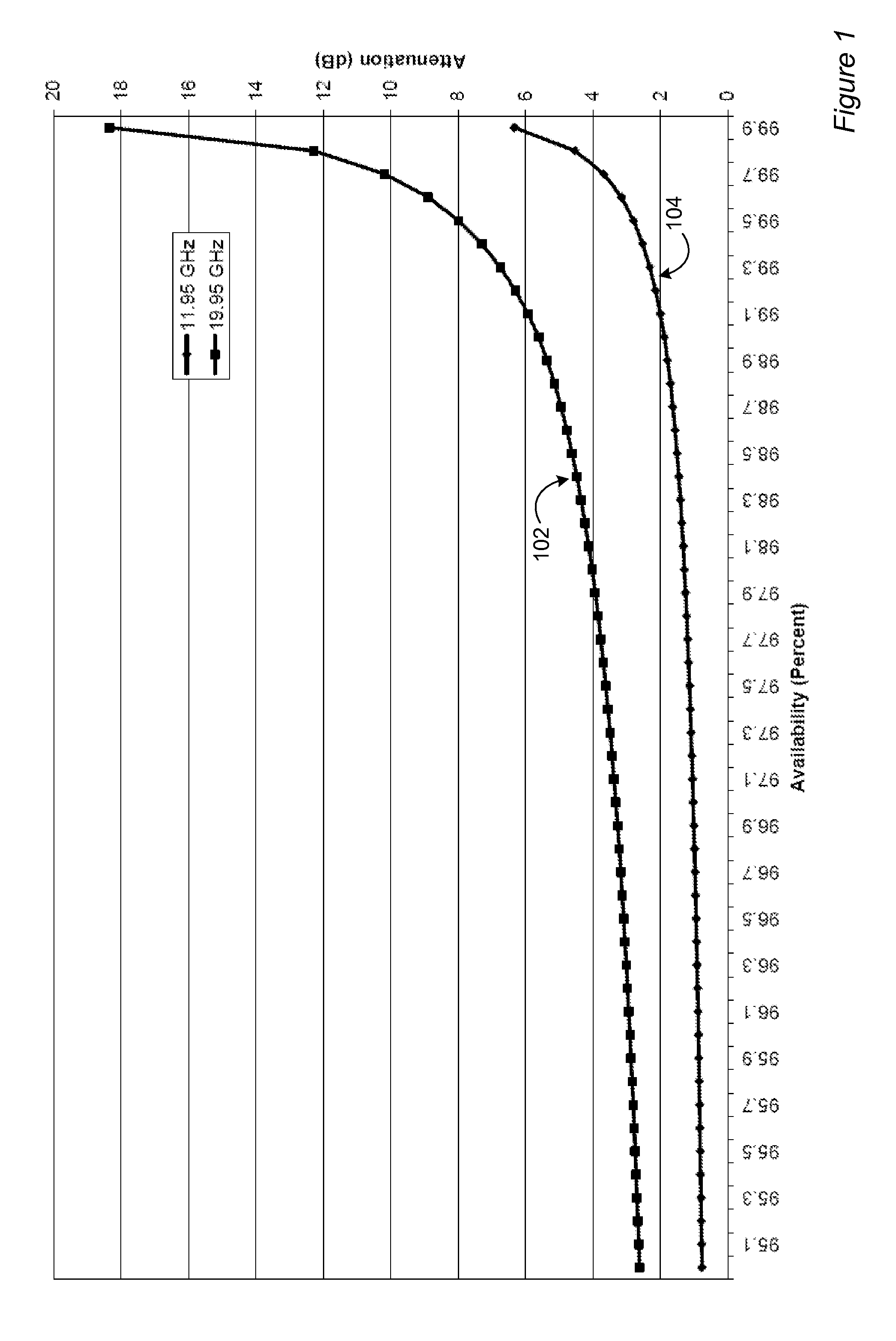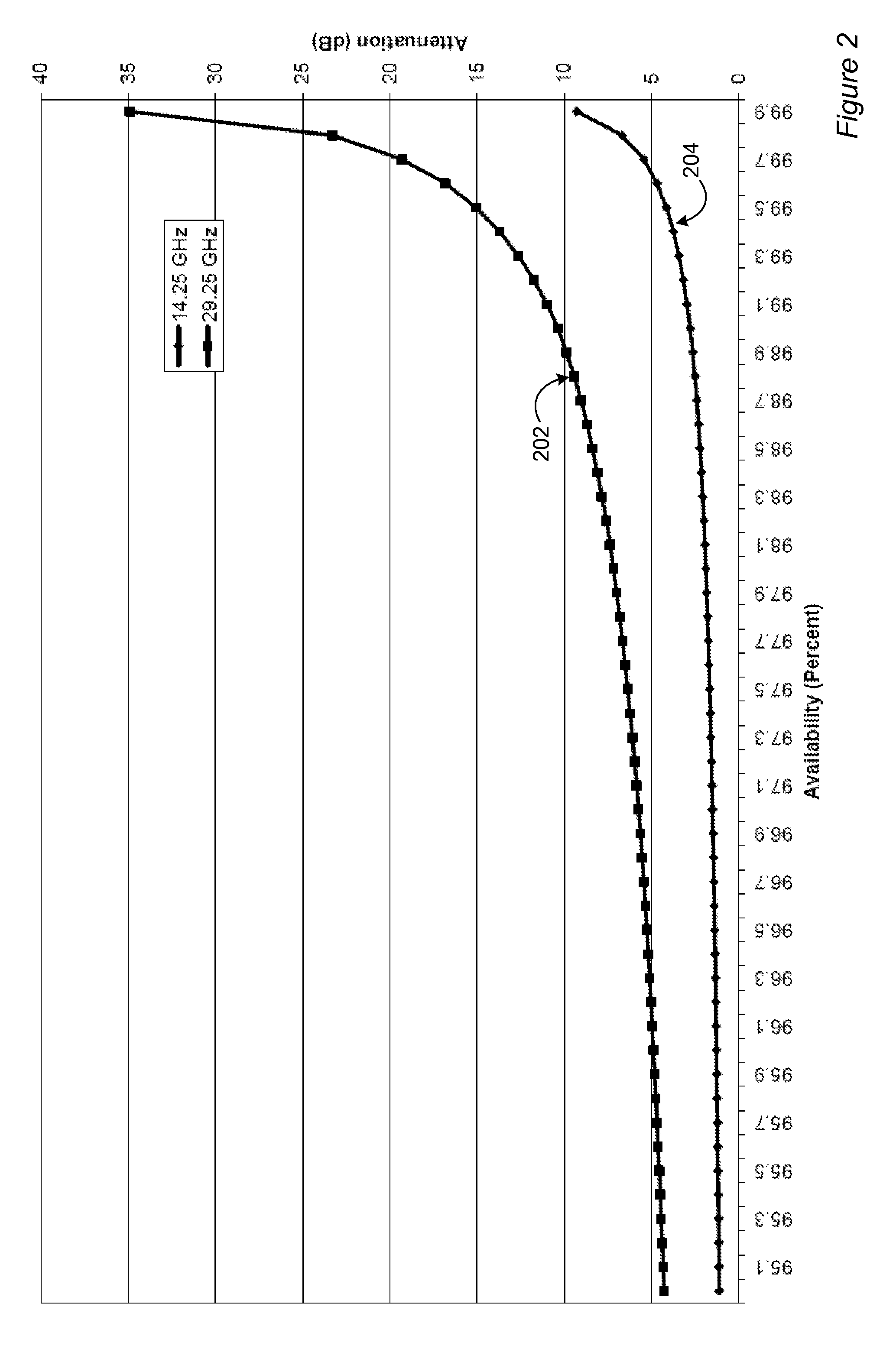Multi-band satellite communication fade mitigation
- Summary
- Abstract
- Description
- Claims
- Application Information
AI Technical Summary
Benefits of technology
Problems solved by technology
Method used
Image
Examples
Embodiment Construction
[0022]With respect to satellite communications, higher frequency bands such as Ka-band may have a higher communication capacity (e.g., with respect to users, throughput and / or bandwidth) relative to lower frequency bands such as Ku-band. For example, the higher communication capacity of higher frequency bands may be due at least in part to greater frequency spectrum allocations associated with higher frequency bands and / or to smaller spot beam sizes associated with higher frequency bands enabling greater frequency reuse. In contrast, lower frequency bands may have a higher availability (e.g., of communication resources such as bandwidth) relative to higher frequency bands. For example, the higher availability of lower frequency bands may be due at least in part to higher frequency bands having a higher susceptibility to rain fade. FIG. 1 and FIG. 2 illustrate.
[0023]FIG. 1 represents two commonly used Space to Earth frequency bands (namely, 11.95 GHz and 19.95 GHz) and FIG. 2 represe...
PUM
 Login to View More
Login to View More Abstract
Description
Claims
Application Information
 Login to View More
Login to View More - R&D
- Intellectual Property
- Life Sciences
- Materials
- Tech Scout
- Unparalleled Data Quality
- Higher Quality Content
- 60% Fewer Hallucinations
Browse by: Latest US Patents, China's latest patents, Technical Efficacy Thesaurus, Application Domain, Technology Topic, Popular Technical Reports.
© 2025 PatSnap. All rights reserved.Legal|Privacy policy|Modern Slavery Act Transparency Statement|Sitemap|About US| Contact US: help@patsnap.com



